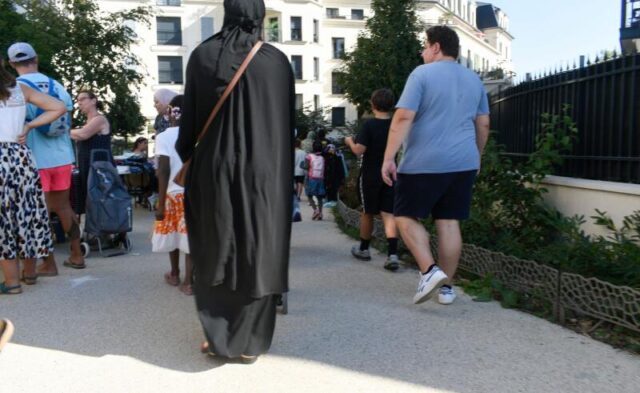France has recently come under fire over its latest abaya ban. So what has it banned thus far and what are the reasons for the ban?
FRANCE has recently come under fire over its latest abaya ban.
The country has enforced a ban on religious symbols in state schools since 2004 in a bid to uphold its strict brand of secularism, known as “laicite”.
So what has it banned thus far and what are the reasons for the ban?
Face veils
France has banned Islamic face veils including the Burqa and Niqab in public spaces in 2011.
According to the country, this move was done to uphold the principles of secularism and to ensure that individuals are identifiable in public settings for security reasons. However, critics argued that it targeted Muslim women and limited their freedom of expression.
Religious symbols in schools
In South Africa, we are used to seeing religious symbols in public schools. In Chapter 2 of the Constitution of South Africa, containing the Bill of Rights, states that everyone has the right to freedom of religion, belief and opinion. According to Section 9 of the Constitution, the equality clause, prohibits unfair discrimination on various grounds including religion.
But this is not the case for France. France has had a long-standing policy that restricts the wearing of conspicuous religious symbols in public schools. This includes headscarves (hijabs), crosses, and kippahs (Jewish skullcaps). The main aim of this is to maintain the secular nature of public education and prevent religious proselytisation within schools.
Religious symbols for public servants
The ban on religious symbols go beyond French schools. France has also placed limitations on the wearing of religious symbols, including headscarves, for public servants in positions of authority, such as judges, prosecutors, and police officers.
This is to ensure the neutrality and impartiality of public institutions.
Swimwear (Burkini Ban)
In a move that sparked outcry and confusion, French municipalities, particularly along the Mediterranean coast, implemented bans on the burkini, a full-body swimsuit worn by some Muslim women.
These bans were often justified on public order and hygiene grounds, but they sparked debates about religious freedom and discrimination.
Abaya ban
In the latest move that sent shockwaves, France has banned the abaya in state-run schools.
This was also done to uphold secularism. While some applauded the move, others criticised it, including Clementine Autain, an MP for the hard-left France Insoumise, who criticised what she called the “clothes police” and a move “characteristic of an obsessional rejection of Muslims”.
It is worth noting that unlike the above attire, the abaya is not religious wear or a religious symbol in any way. It is simply just a loose-fitting dress worn by Muslim women to stay modest.
Full-face motorcycle helmets:
While not a religious or cultural attire per se, France has banned the use of full-face motorcycle helmets in public spaces because it can conceal a person’s identity.
This restriction is related to the same concerns about public safety and identification as the ban on Islamic face veils.
All of the above decisions have undergone scrutiny and has for years been a subject of controversy both within France and internationally.
Some argued that they infringe upon religious freedom and individual rights but the French government has defended these measures as necessary for maintaining secularism, public order, and security.








